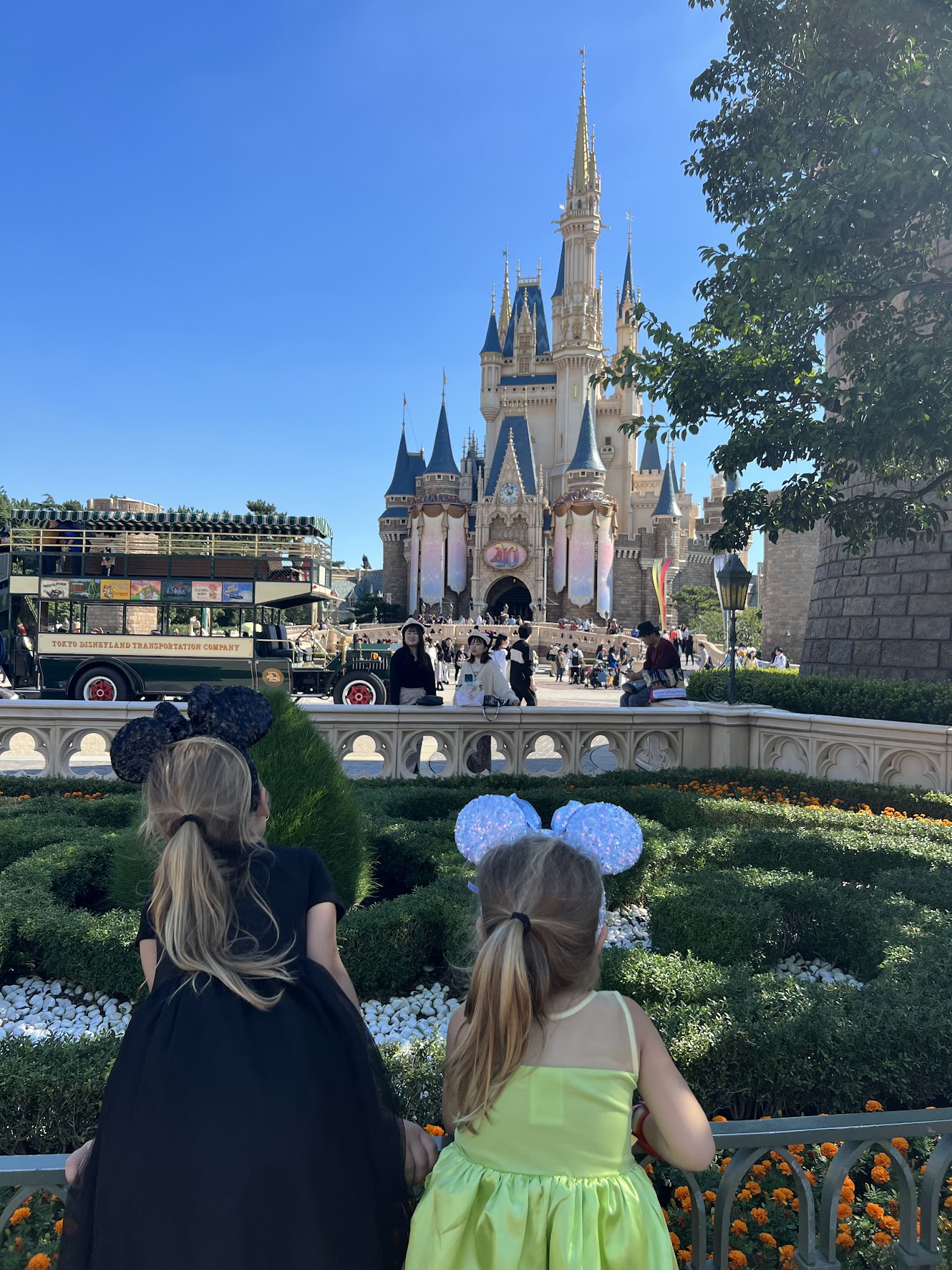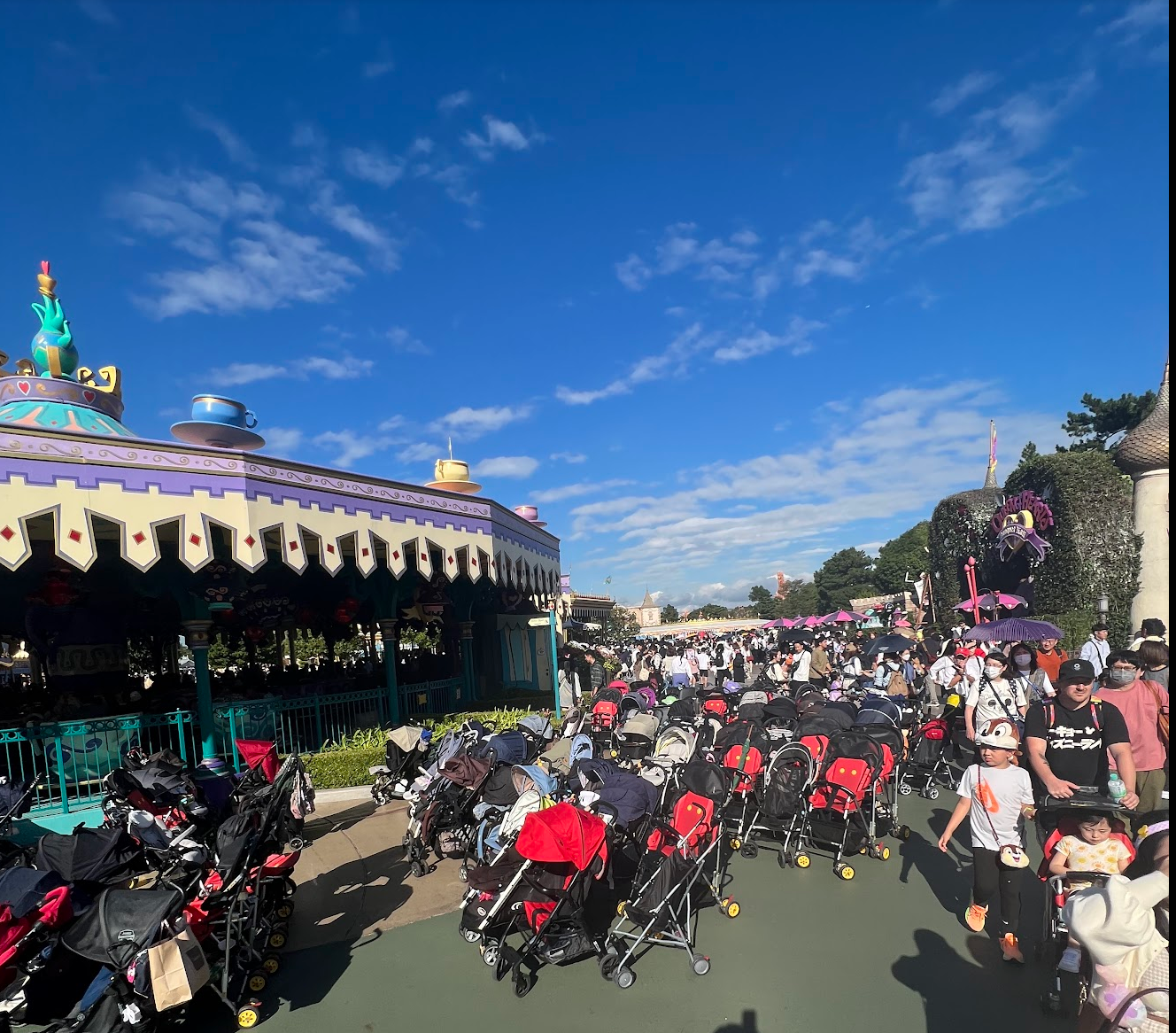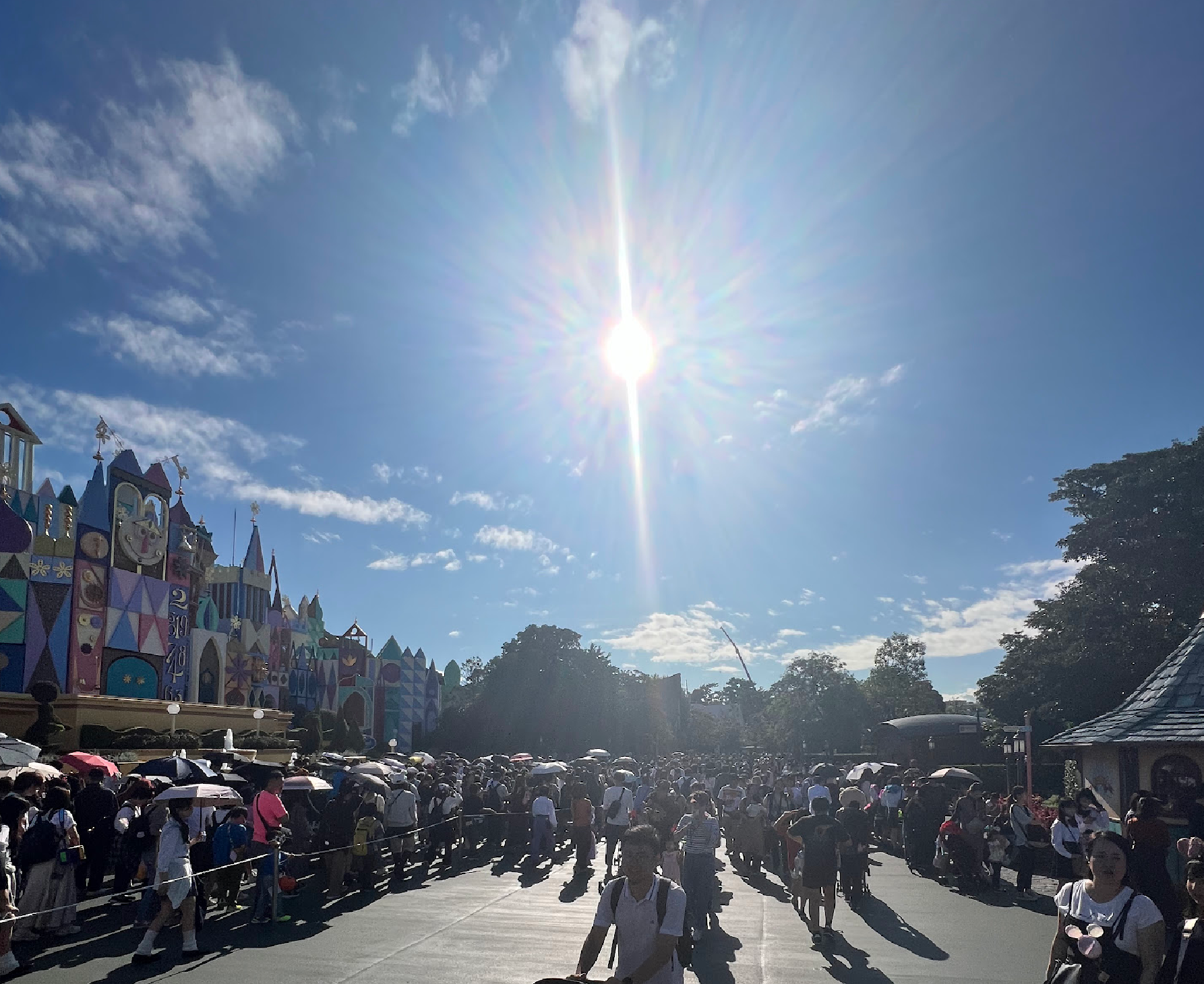Tokyo Disneyland Family Experience Audit
Executive Brief: Strategic analysis revealing how operational paradox creates a ¥3 billion opportunity for premium international family experiences
Client: Tokyo Disneyland | Location: Urayasu, Chiba Prefecture, Japan
Tokyo Disneyland delivers world-class attractions and magical experiences but loses ¥3 billion annually by failing to address the operational paradox between domestic and international visitor expectations. The park's success with local fans creates a hostile environment for international families, representing a massive untapped premium revenue opportunity.
Visual Evidence: The Operational Paradox

The "Wow" Factor: Iconic landmarks and technological marvels create magical first impressions

The Challenge: Catastrophic overcrowding makes navigation stressful and impossible to enjoy

Revenue Loss: 2-3 hour wait times for attractions destroy the value proposition for families

Missed Opportunity: Merchandise-driven gridlock prioritizes adult collectors over family experiences
Family Customer Journey Analysis
Comprehensive 8-hour family experience evaluation during peak season
The Magical First Impressions
Seeing Cinderella's Castle was breathtaking, and the intricate detail of World Bazaar was truly impressive. The park's physical beauty and cleanliness were undeniable. Even from the queue, we could tell the attractions were technologically advanced.
Impact: This phase delivers on the Disney brand promise and creates positive first impressions that drive initial excitement.
The Operational Disaster
A 30-minute wait just to enter set a terrible tone. Every pathway felt congested, making navigation stressful with children. Wait times for popular attractions were consistently 2-3 hours, making it impossible for families to experience the park.
Impact: This phase determines the entire day's experience. Overcrowding destroys the value proposition and creates family stress.
The Final Disappointment
Huge queues for popcorn buckets and 30+ minute lines just to enter shops created a bizarre dynamic where our kids couldn't browse for simple souvenirs. The focus on adult collectors over family experiences was the final letdown.
Impact: This phase determines word-of-mouth and repeat visits. Poor service recovery creates negative international reputation.
Competitive Analysis: The International Theme Park Market
How Tokyo Disneyland compares to leading international theme parks
| Experience Factor | Tokyo Disneyland | Universal Studios Japan | Disneyland Paris |
|---|---|---|---|
| Attraction Quality | World-Class | Excellent | Excellent |
| International Visitor Experience | Poor | Excellent | Good |
| Express Pass System | Complex | Simple & Effective | Good |
| International Revenue | Underperforming | Strong | Strong |
Tokyo Disneyland has the hardest part right—world-class attractions and magical experiences—but operates with a model optimized for local fans rather than international visitors. Universal Studios Japan is frequently cited by international travelers as providing a better experience due to its straightforward and effective Express Pass system.
Opportunity: Tokyo Disneyland can become the "premium international family destination" by creating targeted solutions for international visitors while maintaining its successful domestic model.
Strategic Recommendations
Two-phase implementation plan to unlock ¥3 billion in annual revenue
Launch Premium International Experience
Create an exclusive, high-priced ticket tier available only to foreign passport holders. This package would include Premier Access for 4 major attractions, a reservation at a table-service restaurant, and a voucher for merchandise pickup at a dedicated, queue-free location.
Investment Required: Primarily operational and technological adjustments
Expected Outcome: ¥3 billion+ annual revenue through premium international packages
Develop Specialized International Support
Train a specific team of Guest Services staff on the expectations of Western visitors, empowering them with de-escalation techniques and modest service recovery options (e.g., food vouchers) to better handle inevitable complaints.
Investment Required: Minimal (training costs)
Expected Outcome: Significant increase in international guest satisfaction and reduction in negative reviews
Financial Impact Analysis
Conservative revenue projections based on international visitor premium packages
| Revenue Stream | Current Performance | Target Performance | Annual Impact |
|---|---|---|---|
| International Premium Packages | ¥0 | ¥3,000,000,000 | ¥3,000,000,000 |
| International Visitor Satisfaction | Low | High | ¥500,000,000 |
| Word-of-Mouth Marketing | Negative | Positive | ¥200,000,000 |
Conservative estimate based on 150,000 international visitors purchasing premium packages at ¥20,000 per person. This represents a 1,200%+ return on investment for operational improvements.
Tokyo Disneyland's operational model is a victim of its own success. The park has brilliantly catered to a local fan base that spends record amounts on merchandise and is accustomed to "queuing culture," but this has created a hostile environment for international tourists with limited vacation time and different expectations.
By recognizing the profound disconnect between its current operations and the expectations of international families, the park has a rare opportunity. By creating a premium, curated experience for this valuable demographic, it can solve its biggest friction point, repair its international reputation, and unlock over ¥3.7 billionin new annual revenue.
The opportunity is clear: Tokyo Disneyland can become the premier "international family destination" while maintaining its successful domestic model and generating sustainable revenue growth from both markets.
Ready to Transform Your Theme Park's International Experience?
Get a comprehensive Family Experience Audit for your attraction business